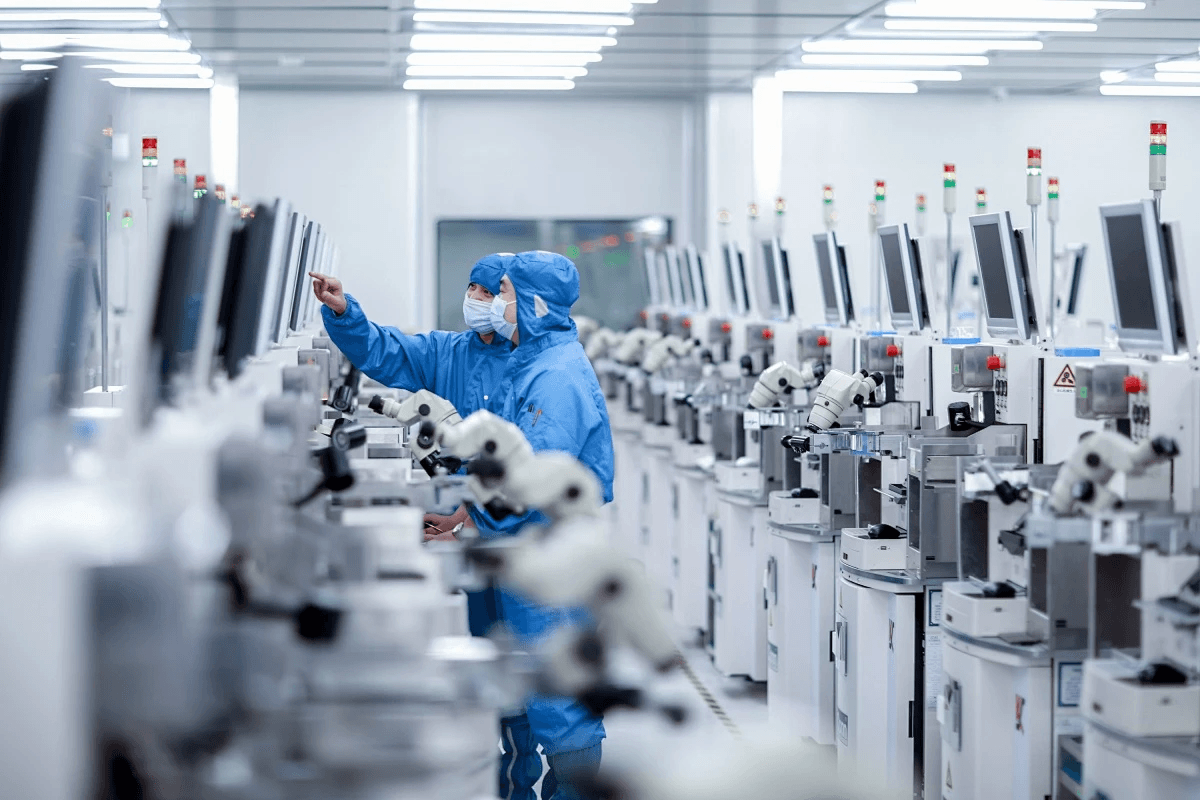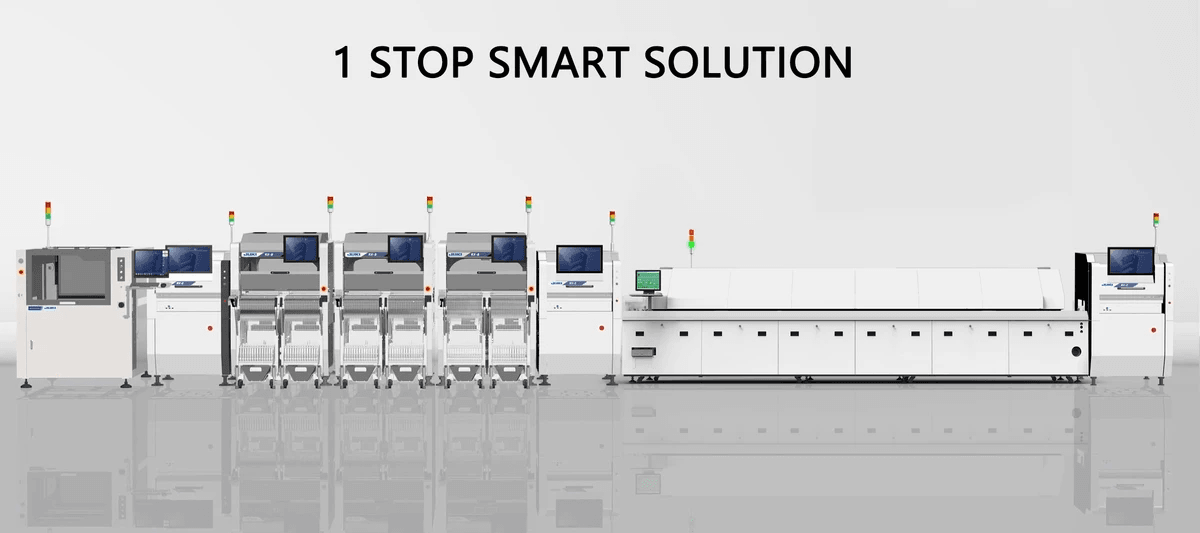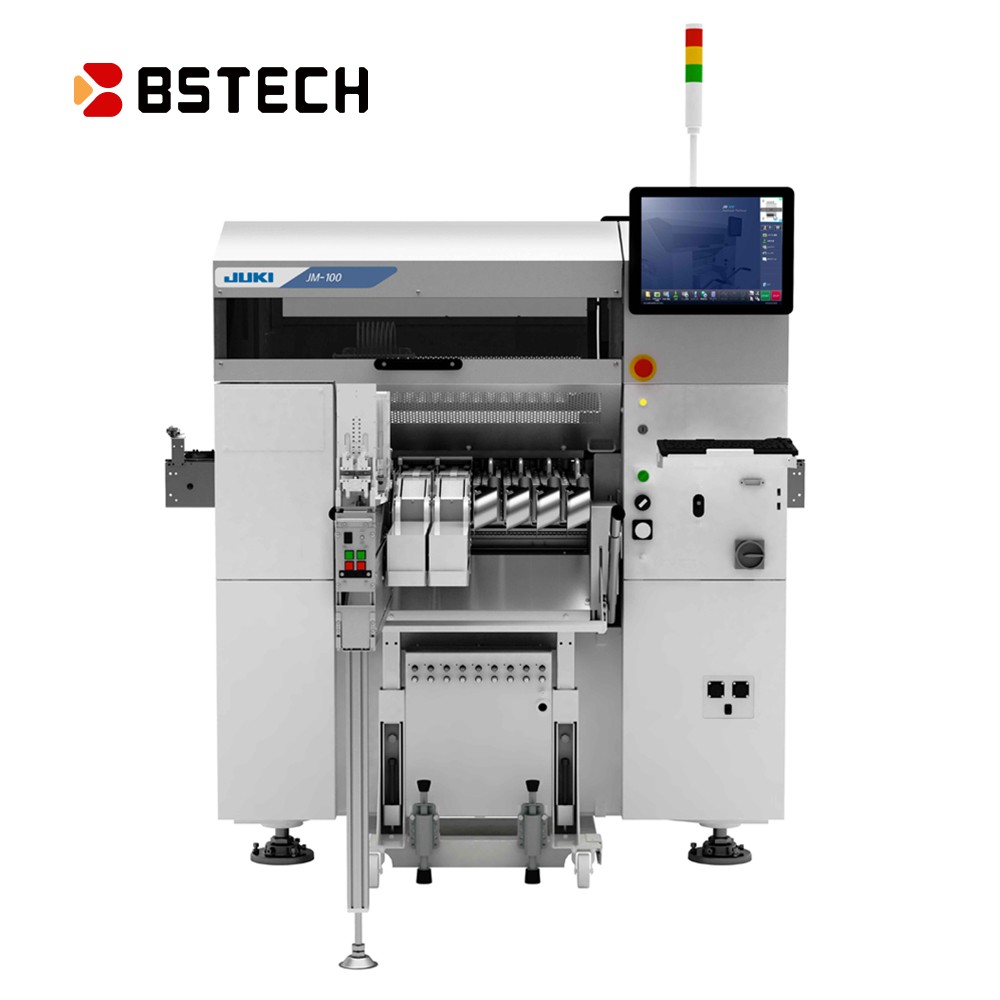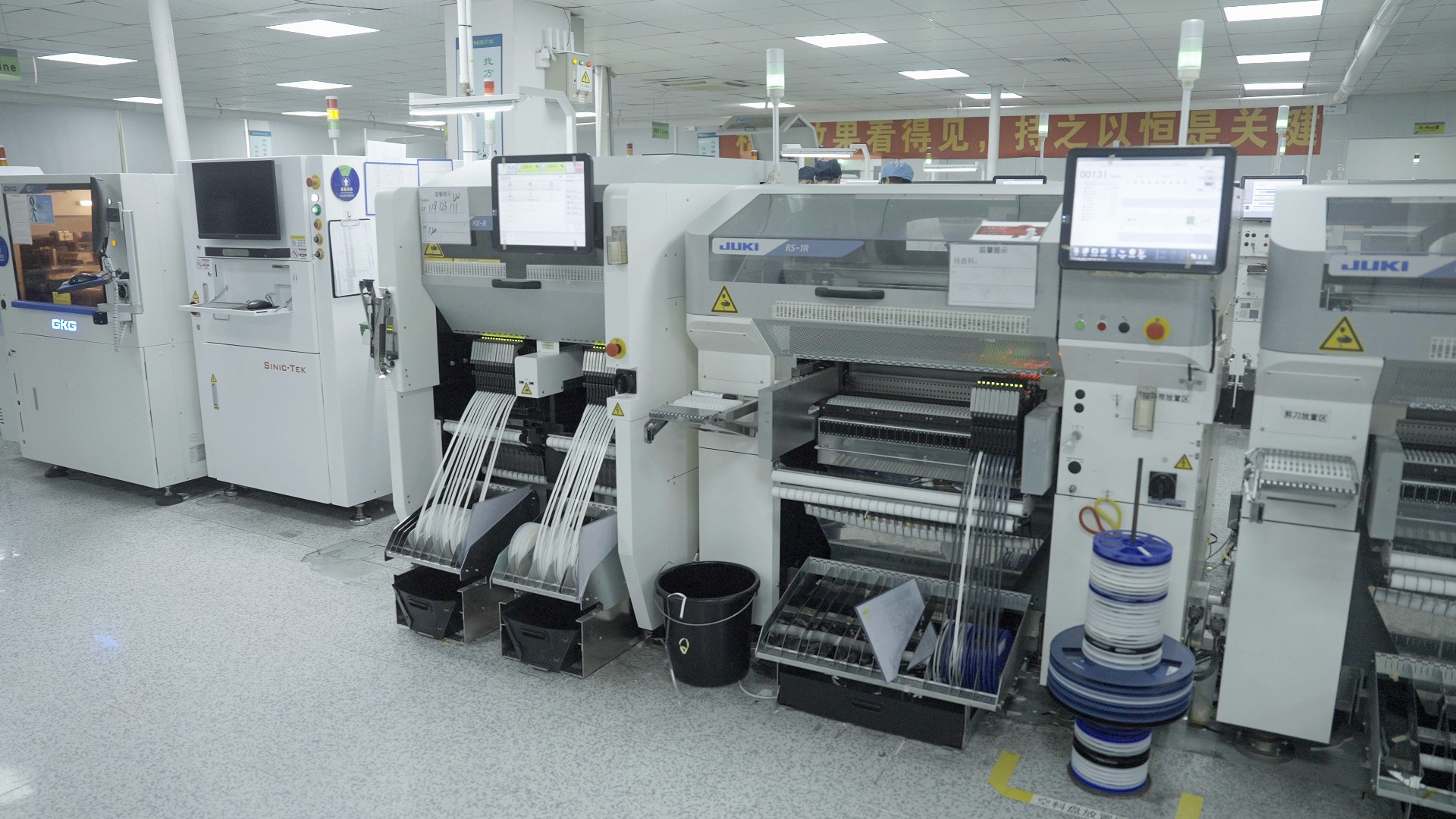Introduction

In the fast-paced world of electronics, efficiency and precision are paramount. Enter Surface Mount Technology (SMT), a game-changer that has revolutionized how we assemble circuit boards. This innovative approach allows for smaller, lighter, and more complex printed circuit board assembly (PCBA), making it a cornerstone of modern electronics.
What Is Surface Mount Technology
Surface Mount Technology is a method used to mount electronic components directly onto the surface of a printed circuit board (PCB). Unlike traditional through-hole technology, which involves inserting leads into holes on the PCB, SMT allows components to be placed flat on the board's surface. This not only saves space but also enhances performance by reducing signal pathways and improving electrical characteristics.
Importance of SMT in Modern Electronics
The significance of SMT in modern electronics cannot be overstated; it enables manufacturers to produce compact and efficient devices that power our daily lives. With the growing demand for miniaturization in gadgets—from smartphones to medical devices—SMT has become essential for meeting these challenges while maintaining high reliability in PCB manufacturing. As technology continues to advance, the role of surface mount technology process will only expand further, shaping the future of electronic design.
Overview of the Surface Mount Technology Process
The surface mount technology process involves several key stages that transform raw materials into fully functional circuit boards ready for assembly. Initially, components are precisely placed on PCBs using advanced pick and place machines, ensuring accuracy and speed during PCB assembly. Following this, various soldering techniques are employed to secure these components firmly in place—a crucial step that guarantees durability and performance in any electronic application.
Understanding SMT Components

In the world of electronics, understanding surface mount technology (SMT) components is crucial for anyone involved in the circuit board assembly process. These components are designed to be mounted directly onto the surface of a printed circuit board (PCB), allowing for more compact designs and improved performance. By delving into common SMT components and their differences from traditional through-hole components, we can better appreciate how they influence PCB manufacturing.
Common SMT Components Explained
Common SMT components include resistors, capacitors, diodes, and integrated circuits (ICs). These tiny marvels come in various sizes and shapes, making them ideal for high-density circuit board designs where space is at a premium. Understanding these components is essential for anyone involved in PCB assembly because their characteristics can significantly affect the overall functionality of the circuit board.
In addition to their compact size, many SMT components offer improved electrical performance compared to their through-hole counterparts. For example, surface mount capacitors typically have lower Equivalent Series Resistance (ESR), enhancing efficiency in power applications. As you navigate the surface mount technology process, knowing which components to choose will streamline your PCB manufacturing efforts.
Differences Between SMT and Through-Hole Components
The primary distinction between SMT and through-hole components lies in their mounting technique on a circuit board. While through-hole components require holes drilled into the PCB for insertion, SMT devices are soldered directly onto pads on the surface of the board. This difference not only affects physical assembly but also influences thermal performance and signal integrity within your printed circuit board assembly.
Another notable difference is size; SMT components are generally much smaller than through-hole ones, allowing for more efficient use of space on a PCB. This miniaturization enables manufacturers to create lighter and more compact electronic devices without compromising functionality. Understanding these differences helps engineers make informed decisions during the design phase of PCB board assembly.
How SMT Components Impact Circuit Board Design
The choice of SMT components plays a significant role in shaping circuit board design strategies during the PCB manufacturing process. Engineers must consider factors such as component placement density, thermal management, and electrical performance when selecting parts for their designs. The ability to use smaller devices leads to innovative layouts that can enhance product reliability while reducing production costs.
Moreover, incorporating various types of surface mount technology can influence how heat dissipates across a printed circuit board assembly during operation. Properly designed layouts ensure optimal heat distribution while minimizing potential hotspots that could damage sensitive electronics over time. Thus, understanding how different SMT components interact within a circuit is essential for successful PCB assembly.
The Surface Mount Technology Process

The surface mount technology process is a critical aspect of modern electronics, enabling efficient and compact designs. Understanding the key steps involved in PCB assembly can significantly improve the quality and reliability of printed circuit boards. This section will explore the essential components of the surface mount technology process, highlighting how each step contributes to successful circuit board assembly.
Key Steps in PCB Assembly
The PCB assembly process begins with designing the layout of the printed circuit board, ensuring that all components fit seamlessly together. Once the design is finalized, manufacturers move on to producing the bare PCB, which involves etching copper traces onto a substrate material. After creating the PCB board assembly, it’s time for component placement, where various surface mount components are strategically positioned on the board.
Following component placement, soldering is performed to create reliable electrical connections between components and their respective pads on the circuit board. The final steps involve inspection and testing to ensure that every connection is secure and functional before packaging for shipment. By adhering to these key steps in PCB assembly, manufacturers can optimize their production processes and enhance product quality.
Role of Pick and Place Machines
Pick and place machines play an indispensable role in automating the surface mount technology process during circuit board assembly. These sophisticated devices are designed to accurately position SMT components onto PCBs with high precision and speed—far surpassing manual placement methods. By employing advanced vision systems, pick and place machines ensure that every component aligns perfectly with its designated pad on the printed circuit board.
Moreover, these machines significantly reduce labor costs while increasing throughput in PCB manufacturing environments. Their ability to handle various component sizes also allows for greater flexibility in design choices when developing complex circuits for diverse applications. In essence, pick and place machines are vital players in streamlining PCB board assembly operations.
Soldering Techniques for SMT
Soldering techniques are crucial within the surface mount technology process as they establish permanent electrical connections between SMT components and their pads on a PCB. Two primary methods dominate this stage: reflow soldering and wave soldering; each has its unique advantages depending on specific project requirements. Reflow soldering involves applying solder paste to component pads before heating them using infrared or convection ovens—perfect for achieving consistent results across densely populated boards.
On the other hand, wave soldering is typically reserved for mixed-technology assemblies where both through-hole and surface mount technologies coexist on a single circuit board assembly. This technique involves passing PCBs over a wave of molten solder that adheres to exposed metal surfaces—ensuring robust connections even under challenging conditions like thermal cycling or mechanical stress. Ultimately, selecting appropriate soldering techniques greatly impacts overall reliability within PCB manufacturing processes.
PCB Manufacturing and Assembly Techniques

The world of PCB manufacturing and assembly is a complex yet fascinating realm that combines precision engineering with cutting-edge technology. At the heart of this process is printed circuit board assembly (PCBA), where various electronic components are meticulously placed onto a circuit board to create functional devices. Understanding the intricacies of this process can significantly impact the quality and efficiency of your final product.
Overview of Printed Circuit Board Assembly
Printed circuit board assembly is a critical phase in the surface mount technology process that transforms raw PCBs into fully functional electronic devices. This stage involves several key steps, including component placement, soldering, and inspection, ensuring that each part works seamlessly together on the circuit board. The success of PCB assembly hinges on precise alignment and connection between components, which ultimately determines the reliability and performance of the finished product.
The PCB assembly process typically begins with surface mount technology (SMT) components being placed on the board using advanced machinery like pick-and-place machines. These machines operate with incredible speed and accuracy, positioning components according to predefined layouts in mere seconds. Once all components are in place, they undergo soldering techniques to establish secure electrical connections before moving on to inspection for quality assurance.
Benefits of Automated PCB Assembly
Automated PCB assembly has revolutionized how we approach circuit board manufacturing by enhancing efficiency and reducing human error. By leveraging robotics and sophisticated software systems, manufacturers can achieve higher production rates while maintaining consistency across large batches of printed circuit boards. This level of automation not only streamlines operations but also minimizes labor costs associated with manual handling.
Another significant advantage is improved precision in component placement during the surface mount technology process. Automated systems can handle smaller SMT components that require exact positioning—a feat that's challenging for manual assemblers—ensuring optimal functionality in compact designs. Moreover, automated processes allow for real-time monitoring and adjustments, further enhancing production quality while minimizing defects.
In addition to efficiency gains, automated PCB assembly promotes scalability for businesses looking to grow their production capabilities without sacrificing quality or speed. As demand for electronic devices continues to rise globally, companies can adapt quickly by ramping up automated processes rather than relying solely on labor-intensive methods that may slow down output.
Quality Control in PCB Manufacturing
Quality control is an essential aspect of any successful printed circuit board assembly operation; it ensures that every unit meets stringent industry standards before reaching consumers' hands. In the context of surface mount technology (SMT), effective quality control measures encompass several stages throughout the manufacturing process—from initial inspections after component placement to final checks before packaging.
One common method employed during quality control is Automated Optical Inspection (AOI), which uses high-resolution cameras to detect defects or misalignments on assembled PCBs quickly. This technique allows manufacturers to catch potential issues early in the surface mount technology process rather than waiting until later stages when rectifying problems becomes more complicated—and costly! Regular testing procedures also include X-ray inspection for hidden solder joints or other internal flaws that could compromise device performance.
To further enhance reliability in PCB manufacturing, many companies adopt rigorous testing protocols such as functional testing or environmental stress screening (ESS). These practices ensure that each assembled circuit board operates within specified parameters under various conditions before being delivered to customers—ultimately leading to increased customer satisfaction and trust in their products.
Choosing the Right Equipment

Choosing the right equipment for surface mount technology (SMT) is crucial for optimizing the circuit board assembly process. The efficiency and quality of PCB manufacturing largely depend on the machinery used in printed circuit board assembly. With a plethora of options available, making an informed decision ensures that your PCB and assembly operations run smoothly and effectively.
Essential Machinery for SMT
When diving into the surface mount technology process, several key machines are essential for achieving high-quality results in circuit board assembly. First up is the pick-and-place machine, which accurately positions SMT components onto the PCB board assembly with incredible speed and precision. Next, reflow ovens are vital for soldering these components securely onto the circuit board, ensuring a reliable connection that withstands various operational conditions.
Additionally, automated inspection systems play a critical role in maintaining quality control throughout the PCB manufacturing process. These systems can identify defects early on, preventing costly errors down the line. Ultimately, investing in high-quality machinery not only enhances production efficiency but also contributes to superior end products.
Bensun Technology’s Offerings
Bensun Technology stands out as a leader in providing top-notch equipment tailored for surface mount technology processes. They offer an extensive range of machines designed specifically for PCB assembly needs—from advanced pick-and-place systems to state-of-the-art reflow ovens that ensure optimal soldering conditions. Their commitment to innovation means you’ll find cutting-edge solutions that keep pace with evolving industry demands.
Moreover, Bensun Technology provides comprehensive support services to help clients maximize their investment in SMT equipment. From installation to training and ongoing maintenance, they ensure that your circuit board assembly operations run like a well-oiled machine. By choosing Bensun Technology’s offerings, you’re not just purchasing equipment; you’re partnering with a company dedicated to your success in PCB manufacturing.
Factors to Consider When Selecting SMT Equipment
Selecting the right SMT equipment involves careful consideration of several factors to ensure compatibility with your specific needs and goals in printed circuit board assembly. First and foremost is evaluating production volume; different machines cater to varying scales of operation—from low-volume prototyping to high-speed mass production runs on complex PCBs.
Another crucial factor is ease of use—opt for machinery that offers user-friendly interfaces and robust support resources so your team can quickly adapt without extensive downtime or training costs during setup or operation phases of PCB board assembly processes. Finally, consider scalability; as your business grows or diversifies its product lines, having flexible equipment will enable seamless transitions without requiring complete overhauls of your existing setup.
Challenges in Surface Mount Technology

Surface Mount Technology (SMT) has revolutionized the way we approach circuit board assembly, but it’s not without its challenges. The intricacies of the surface mount technology process can lead to various issues during printed circuit board assembly, affecting efficiency and product quality. Understanding these challenges is crucial for manufacturers looking to optimize their PCB manufacturing and ensure reliable performance.
Common Issues in Circuit Board Assembly
In the realm of circuit board assembly, several common issues can arise that hinder the effectiveness of the surface mount technology process. One prevalent problem is component misalignment during placement, which can lead to improper solder connections and ultimately affect device functionality. Additionally, soldering defects such as cold joints or bridging are frequent headaches that can compromise the integrity of the PCB board assembly.
Another challenge lies in thermal management; as components shrink in size due to SMT advancements, managing heat dissipation becomes increasingly complex. This is particularly problematic for high-density assemblies where overheating can cause failure or reduce reliability over time. Lastly, managing component availability also poses a challenge; with rapid technological advancements, keeping up with the latest SMT components while ensuring compatibility with existing designs can be daunting.
Solutions to SMT Challenges
Addressing issues in circuit board assembly requires a multifaceted approach that combines advanced technology with best practices in PCB manufacturing. To tackle misalignment problems during placement, investing in high-precision pick and place machines can significantly improve accuracy and efficiency within the surface mount technology process. Furthermore, employing automated optical inspection systems after soldering helps identify defects early on and ensures only quality PCBs proceed through final testing.
To mitigate thermal management concerns, utilizing thermal vias and heat sinks are effective strategies that enhance heat dissipation across densely packed circuits. Additionally, embracing design-for-manufacturability principles helps streamline PCB board assembly processes by simplifying component layouts and reducing potential conflicts between parts during production runs. Finally, establishing strong relationships with suppliers ensures access to a wide variety of SMT components while keeping pace with industry trends.
Future Trends in SMT and PCB Assembly
The future of surface mount technology looks promising as innovations continue to emerge within circuit board manufacturing processes. One notable trend is the rising adoption of flexible printed circuit boards (FPCBs), which offer enhanced design flexibility for compact electronic devices while maintaining reliability throughout their lifecycle. As consumer electronics push towards more compact designs, FPCBs will likely play an increasingly critical role alongside traditional PCB assembly methods.
Moreover, advancements in automation are set to redefine how we approach printed circuit board assembly altogether; machine learning algorithms will soon enable smarter production lines capable of self-correcting errors during the surface mount technology process—leading to higher yields and lower operational costs over time. Additionally, sustainability will take center stage; manufacturers will focus on eco-friendly materials and energy-efficient processes as they strive towards greener practices within PCB manufacturing.
Conclusion

As we wrap up our exploration of Surface Mount Technology (SMT), it’s clear that this process has revolutionized the way we approach circuit board assembly. From compact designs to enhanced performance, SMT is not just a trend but a fundamental shift in printed circuit board assembly. Understanding the intricacies of the SMT components and processes can significantly impact the efficiency and quality of PCB manufacturing.
Key Takeaways on SMT
Surface Mount Technology is pivotal in modern electronics, enabling manufacturers to create smaller, more efficient devices without sacrificing performance. The surface mount technology process streamlines PCB assembly by allowing for automated techniques that enhance precision and speed. By grasping the differences between SMT and traditional through-hole components, engineers can better tailor their designs for optimal functionality in circuit board assembly.
The Future of Circuit Board Manufacturing
The future of circuit board manufacturing looks promising with advancements in surface mount technology continuing to emerge. Innovations such as improved soldering techniques and smarter pick-and-place machines are setting new standards for printed circuit board assembly efficiency. As industries evolve, embracing these changes will be crucial for staying competitive in an increasingly tech-driven world.
Why Choose Bensun Technology for Your Needs
When it comes to selecting partners for your PCB and assembly needs, Bensun Technology stands out with its state-of-the-art offerings tailored specifically for surface mount technology processes. Their commitment to quality control ensures that every aspect of PCB manufacturing meets rigorous industry standards while maintaining cost-effectiveness. By choosing Bensun Technology, you’re not just investing in equipment; you’re securing a reliable partner dedicated to advancing your circuit board assembly capabilities.
